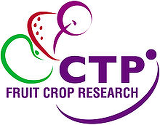october 2021 – september 2024
Katie Stewart

Apple scab is one of the most important diseases of apple worldwide. It is caused by the fungus Venturia inaequalis which reproduces both sexually and asexually. Over winter, sexual reproduction occurs on fallen leaf litter and the primary inoculum of ascospores infect new leaves and fruit in the spring.
Previous data suggests that sexual mating is more likely to take place and succeed between isolates from lesions on the same leaf, rather than between independently infected leaves in fallen leaf litter.
For my project I will firstly be testing whether sex is initiated on the leaf before leaf fall; and whether sex is more likely to succeed between lesions on the same leaves. Once I have tested these hypotheses I will be able to study microbial based methods to disrupt sexual reproduction on the leaves.
It is assumed that opposing mating types are required for successful reproduction. I will be identifying the mating type locus from new and existing genomic sequence data and developing molecular markers for the two mating types. Availability of these markers will assist in population genetics studies and theoretical modelling of the scab population, focusing on the spread of virulence and fungicide resistance genes in the population.
The research results will have a huge impact on predicting the durability of resistance genes (hence feasibility of using mixed orchards), spread of fungicide resistance, and reducing primary inoculum for the following season.
Research progress
Katie Stewart AHDB Annual Report 2022
